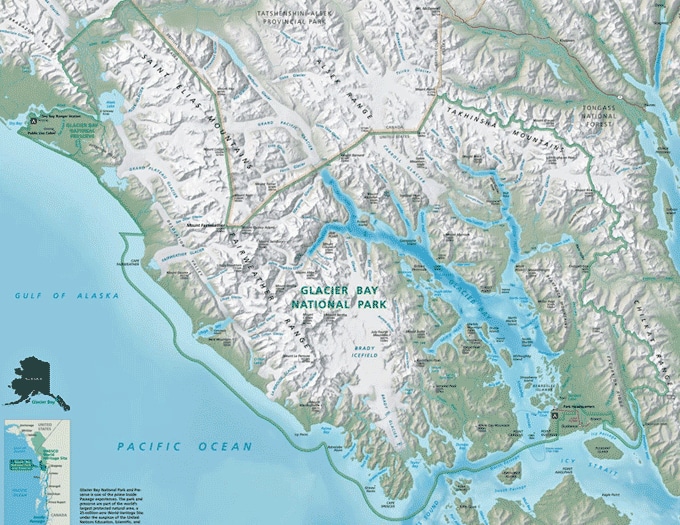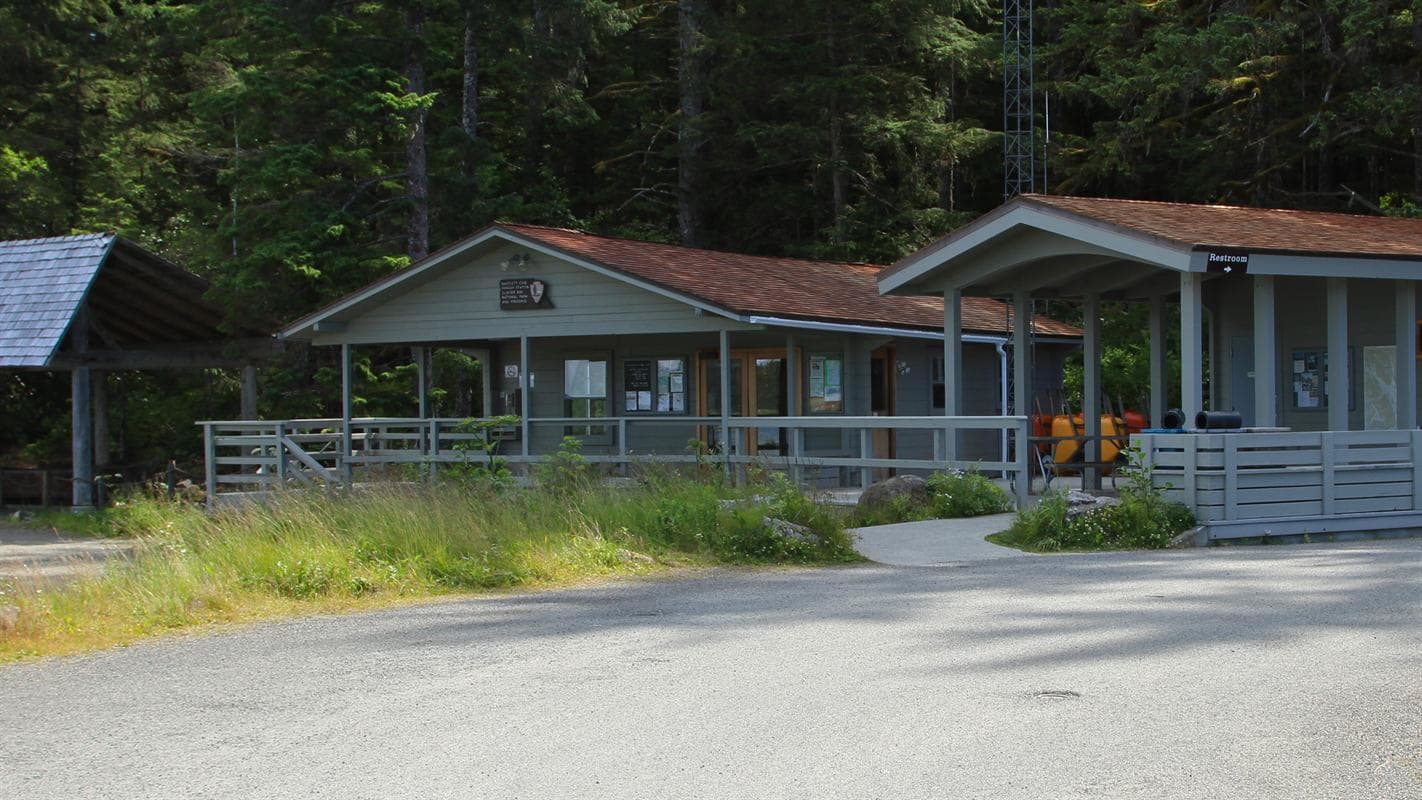It was a regular Glacier Bay day. Due to the climate / weather differences in the lower and upper bay, we had almost all variations of weather, except snow and sun shine. Not so good for the –picture perfect cruise image- but very good for the actual experience. Glacier Bay is not the Caribbean and today the guests saw the area as it was meant to be and what it looks like after all the cruise ships have gone when the season has ended.
To help us tell the story of Glacier Bay we embark the Rangers at Bartlett Cove where the Ranger Station is located. Once it was just the organizational office needed for administering Glacier Bay National Park, and when a cruise ship showed up a Ranger would hop on board and tell something about the area. It gave them an extra chance of travelling up the bay and to get a decent dinner. Bartlett Cove has an airport but the National Park budget in those days was not as such that a life of luxury could be lived there and all that was needed easily flown in.
This was still the case in the early 80’s when I came for the first time to Glacier Bay on the good old Statendam. The Rangers, mainly Ladies, came on board and apart from doing their Cultural thing did not mind at all to combine it with a visit to the Hair dressers. Back packs came on board full of books for sale, backpacks left the ship full of other things “collected” at the Lido Buffet or given to them by a friendly crewmember. One Ranger told me, that Holland America was always much appreciated as it meant a Cheese and Wine party after they all arrived back at the Ranger Station. She was less complimentary about P & O; she probably did not like the British Food or something like it.
Then the cruise ship boom started and more and bigger ships came to Glacier Bay. To service all the ships, more Rangers were needed and led by Holland America financial support came to the National Park. That support varied from direct – fee- payments to donating and maintaining a complete oil spill barge and related, just for the case of. The Ranger station put their educational approach on a more professional footing (all Rangers now use the same script while on board) and the program was extended by bringing an Indian Representative with the team. This person tells about the history of the Indian tribe in the area who for centuries lived (and still lives) right outside Glacier Bay. They really never lived inside the Bay because before 1780 you could not even get into the Bay as the ice reached all the way down to Icy Strait.

Glacier Bay National Park. It extends over a very large area. Well into the Pacific Ocean and encircles the complete Brady Ice field.
With the Glaciers retreating you could sail the full lower bay after 1860 and since 1907 you could get all the way up to the Glaciers we visit today. Lamplugh, John Hopkins (in September only), Marjorie and Grand Pacific Glacier. People did live inside the Bay, well into the 1950’s there were a few homesteads scattered throughout the area. I remember there was one close to Reid Glacier at the entrance to the upper bay.

Glacier Bay Park Ranger Station. Guests with the bigger cruise ships will never see this. I have only been here once in my 37 years at sea. And that was because I had to arrange for a Medical Evacuation from one of the ships. A Medivac airplane flew in, the patient was transferred and a life was saved.
The Ranger experience which is now offered on the ships was drawn up in close cooperation with the Cruise ship company’s. From their side the whole cruise program for the day centers around the Glacier Bay experience and from the Ranger side the program is setup in such a way that it fits in seamlessly with the route the ships follow and what the company likes to get out of it as well. One example is that I saw from nearby was to develop the Youth part of the program. We have on board, Club HAL for toddlers and teens, and during the day they participate in a small Ranger / Glacier Bay program. One crew member normally the Travel Guide, is the program coordinator who acts as a liaison between the ship and the Rangers. Altogether it makes for a very successful day and brings a lot of people much closer to nature. Sometimes people who did not even realize that such a beautiful National Park exists.
The Zaandam said goodbye to the Rangers around 19.00 hrs. and the continued its voyage to Skagway where we are to arrive at 06.00 hrs. in the morning. Early but then the first tour leaves at 06.30. Who said that being a tourist in Alaska is an easy job ??

July 19, 2017 at 4:25 pm
I wonder if P&O did not share their hospitality as much with the Rangers…..not just a different type of food.
After all, even though U.S. Government employees cannot accept gifts worth more than $10 without going through a process, a nice experience or feeling appreciated helps encourage prompt service and sometimes a little more effort above and beyond the expected.
As for being an easy job to be an Alaska tourist, I agree it takes a bit of stamina. Even after ‘taking it easy’ on the last trip, I was still tired after disembarkation (I am sure that staying up late to pack the clothes and souvenirs did not help).
July 20, 2017 at 4:32 pm
Oh Captain Albert, I just love your insight into the history and how it used to be in the early Alaska cruising days. I can imagine the Lady Rangers loving to come aboard the ships and visiting the hair salon, who wouldn’t??
I am not a fan of Alaska cruises (after 2 of them), but still love your blogs about the Alaska cruise circuit.
Ruud Hartog